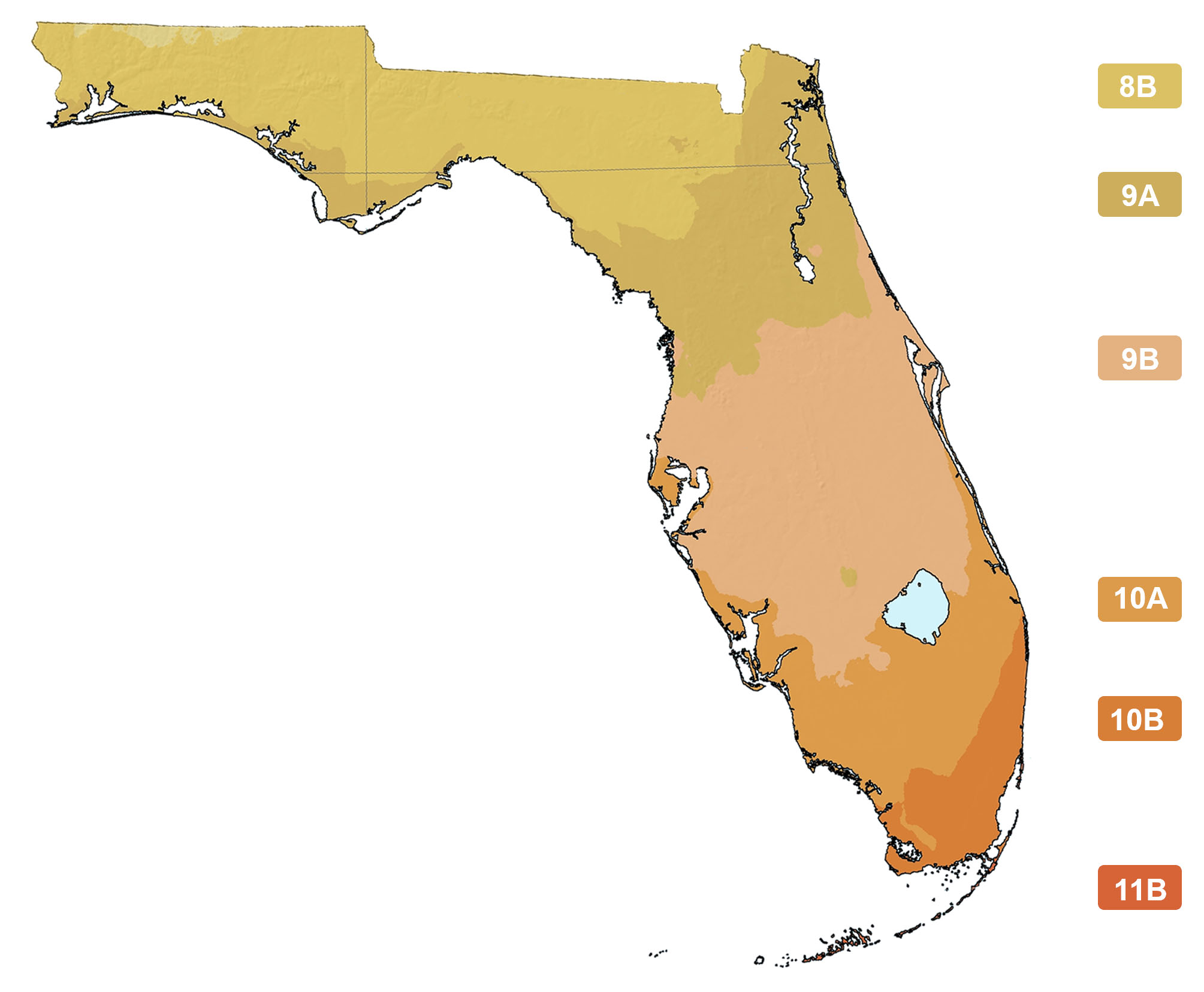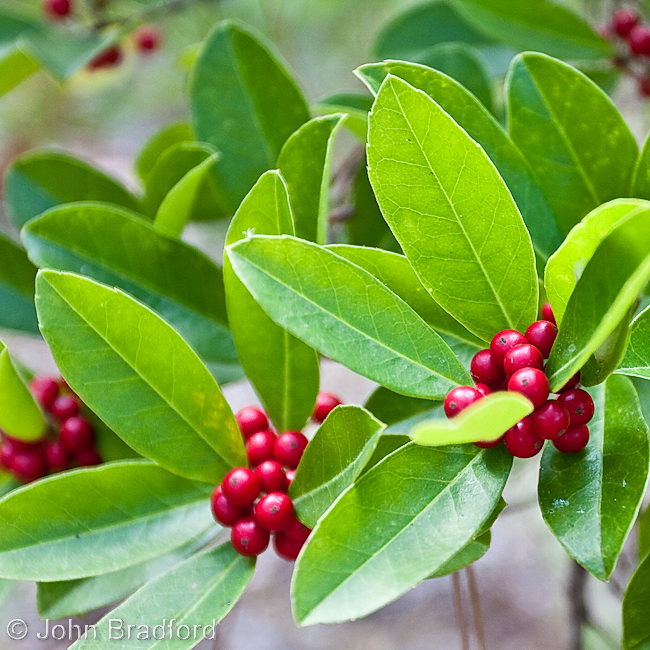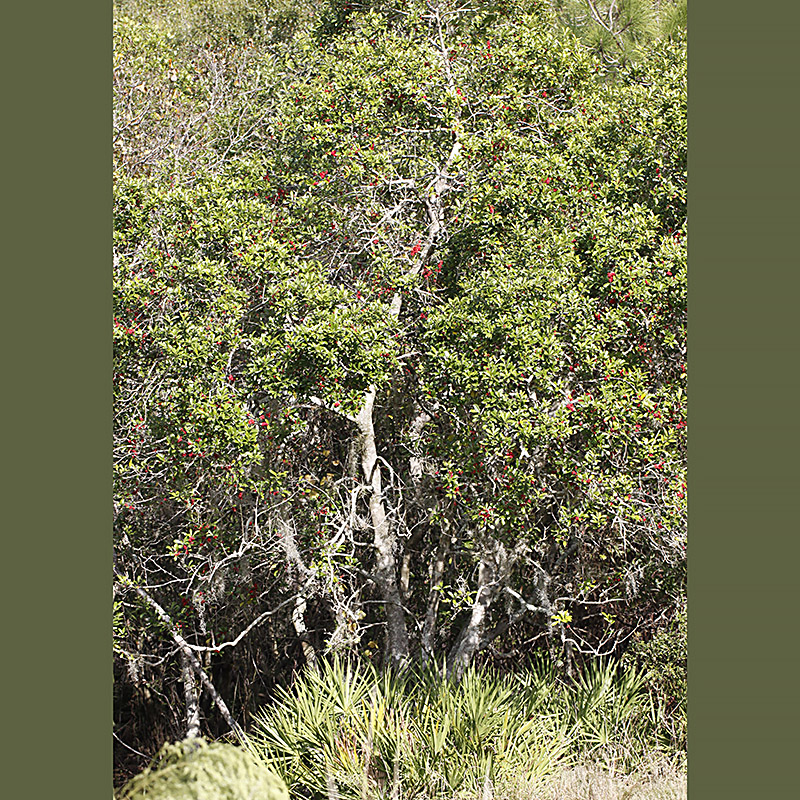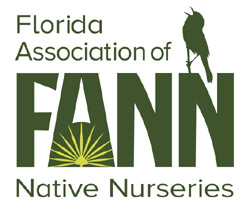Ilex cassine
Photographs belong to the photographers who allow use for FNPS purposes only. Please contact the photographer for all other uses.
Dahoon Holly
Aquifoliaceae
Plant Specifics
| Form: | Tree | |
| Size: | 20-30 ft tall, spread 10-15 ft. | |
| Life Span: | Long-lived perennial | |
| Flower Color: | White | |
| Fruit Color: | Red | |
| Phenology: | Evergreen. Blooms in spring. Fruits ripen in fall and persist into winter. | |
| Noted for: | Showy fruits, Interesting foliage, Hurricane wind resistance |
Landscaping
| Recommended Uses: | Specimen tree. | ||||||||||||||||||||||||||||||||||||||||||
| Considerations: | It's dioecious; so make sure you have at least one male plant in the vicinity to produce berries on the females. | ||||||||||||||||||||||||||||||||||||||||||
| Propagation: | Naturally clonal, so easily started from new offshoots. Seeds of most holly species require 2-3 years of dormancy before they will germinate. | ||||||||||||||||||||||||||||||||||||||||||
| Availability: | Native nurseries, FNPS plant sales, Quality nurseries | ||||||||||||||||||||||||||||||||||||||||||
| Light: | Full Sun, Part Shade, Shade | ||||||||||||||||||||||||||||||||||||||||||
| Moisture Tolerance: |
always floodedextremely dry |
||||||||||||||||||||||||||||||||||||||||||
| (Stays Wet ----- to ----- Not wet but not extremely dry) | |||||||||||||||||||||||||||||||||||||||||||
| Moisture Tolerance: | Stays Wet ----- to ----- Not wet but not extremely dry | ||||||||||||||||||||||||||||||||||||||||||
| Salt Water Flooding Tolerance: | Not salt tolerant of inundation by salty or brackish water. | ||||||||||||||||||||||||||||||||||||||||||
| Salt Spray/ Salty Soil Tolerance: | Low/no tolerance of salty wind or direct salt spray | ||||||||||||||||||||||||||||||||||||||||||
| Soil or other substrate: | Loam, Organic material (muck), Sand | ||||||||||||||||||||||||||||||||||||||||||
| Soil pH: | Acidic to circumneutral | ||||||||||||||||||||||||||||||||||||||||||
Ecology
| Wildlife: |
Fruits are eaten by birds and small mammals. | |
| Insects: | Bees pollinate flowers. Documented bee visitors include Hylaeus confluens, Augochlorapura, Augochlorella gratiosa, Dialictus placidensis and Sphecodes heracle (Deyrup et al. 2002). | |
| Native Habitats: | Dome swamps, coastal flatwoods, transitional edges of dome swamps in flatwoods, coastal flatwoods, bay swamps, cutthroat seep. |
Distribution and Planting Zones
Natural Range in Florida
USDA Zones
Suitable to grow in:
10A 10B 8A 8B 9A 9B

USDA zones are based on minimum winter temperatures
Comments
| General Comments: | While naturally a wetland plant, this species does well across a broad array of cultural conditions. |





